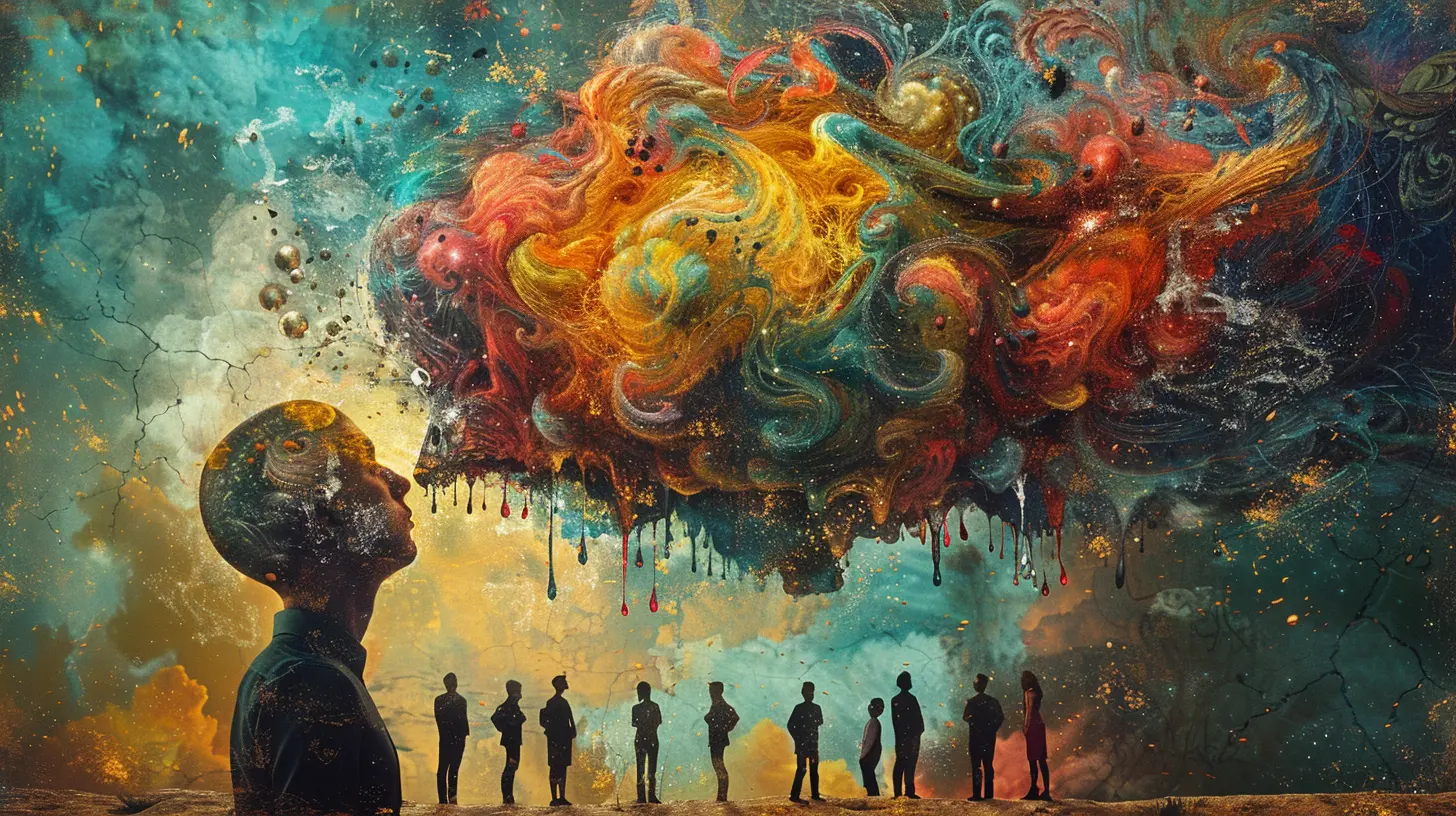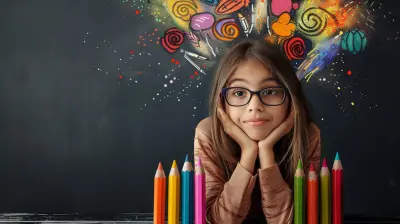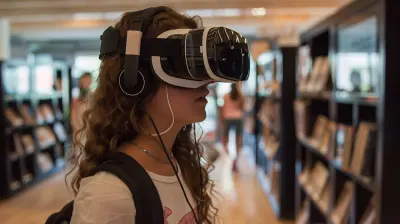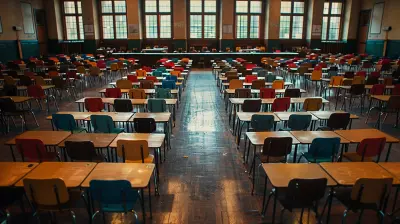18 January 2025
When we think about the arts, creativity is often the first thing that comes to mind. But there's a lot more to it than just coming up with imaginative ideas or creating something beautiful. Critical thinking plays an enormous role in the arts, pushing us to dive deeper, analyze, and truly understand the complexities of artistic expression. This is where the real magic happens—when creativity and critical thinking intertwine.
Whether you're a painter, musician, dancer, or even an art enthusiast, having the ability to think critically about the arts can lead to a richer appreciation and understanding of the work. It's about going beyond "I like this" or "This looks cool." It's about asking questions like, "Why do I feel this way about this piece?" and "What message is the artist trying to convey?"
In this blog post, we'll explore the importance of critical thinking in the arts, how it works alongside creativity, and why it's a skill that should be nurtured in artists and art lovers alike.

What is Critical Thinking in the Arts?
Before we dive deeper, let's clarify what critical thinking in the arts really means. At its core, critical thinking is the ability to analyze, evaluate, and interpret information in a thoughtful and objective way. In the context of the arts, it involves examining artworks, performances, and artistic practices with an analytical lens—considering not only what is presented but also how and why it was created.Think of it this way: Creativity is the spark that ignites the flame, while critical thinking is the oxygen that keeps it burning. Without one, the other can't reach its full potential.
Critical Thinking vs. Creativity: Are They Opposites?
A common misconception is that creativity and critical thinking are opposites. After all, creativity is often seen as free-flowing, spontaneous, and unstructured, while critical thinking is systematic, logical, and deliberate. But in reality, these two skills complement each other beautifully, especially in the arts.Creativity allows artists to explore new ideas, push boundaries, and express themselves in unique ways. However, critical thinking ensures that this creativity is meaningful, purposeful, and coherent. It gives artists the tools to assess their own work, make informed decisions, and refine their ideas into something truly impactful.
For example, think about writing a poem. Creativity might guide you to write down whatever comes to mind, experimenting with metaphors and rhythms. But critical thinking helps you decide which metaphors are effective, which lines are too ambiguous, and how to improve the overall flow.
In short, creativity is the engine, but critical thinking is the steering wheel.

Why Critical Thinking is Essential in the Arts
Critical thinking isn't just a bonus skill for artists—it's essential. Here's why:1. It Enhances Artistic Expression
Art is a form of communication, and like any form of communication, it needs to be clear and impactful to resonate with an audience. Critical thinking allows artists to refine their work, ensuring that it effectively conveys the intended message.Imagine watching a play where the actors are incredibly creative, improvising and adding their own flair to the script. But if their actions don't align with the storyline or character motivations, the audience might leave confused. Critical thinking helps artists stay focused on their goals, ensuring that their creativity serves a larger purpose.
2. It Fosters Deeper Understanding
Art isn't just about creating—it's also about interpreting. To truly appreciate a piece of art, whether it's a painting, song, or dance, you need to go beyond the surface level. Critical thinking allows you to dig deeper, asking questions like:- What is the artist trying to say?
- What historical, social, or cultural context is influencing this work?
- How do the artistic choices (color, composition, movement) contribute to the overall message?
By thinking critically about art, you gain a deeper understanding of both the work itself and the artist behind it. This not only enriches your experience as an observer but also helps you engage in more meaningful discussions about art.
3. It Encourages Problem-Solving and Innovation
Every artist faces challenges, whether it's figuring out how to execute a complex idea or overcoming creative blocks. Critical thinking is a powerful tool for problem-solving, helping artists approach challenges from different angles and find innovative solutions.For example, let's say a painter is struggling to capture a certain emotion in their work. Instead of giving up, they might analyze their approach, experiment with different techniques, and evaluate the results. This process of trial and error is a key aspect of critical thinking, and it's often what leads to breakthroughs in artistic practice.
4. It Helps in Constructive Criticism
Art is often subjective, and receiving feedback can be tough. But critical thinking helps artists approach criticism in a more constructive way. Instead of taking feedback personally, they can analyze it objectively, considering whether the critique is valid and how it can be used to improve their work.Likewise, when offering feedback to others, critical thinking allows artists to provide more thoughtful, detailed, and helpful critiques. Rather than simply saying, "I don't like this," they can explain why something doesn't work and offer suggestions for improvement.

How to Develop Critical Thinking in the Arts
Now that we've established the importance of critical thinking in the arts, you might be wondering: How can I develop this skill?Here are some practical tips to help you enhance your critical thinking abilities as an artist or art lover:
1. Ask Questions
One of the easiest ways to start thinking critically about art is to ask questions. Whether you're creating or observing, challenge yourself to dig deeper by asking:- What is the purpose of this work?
- How does the artist use elements like color, shape, sound, or movement to convey meaning?
- What emotions does this piece evoke, and why?
By constantly questioning what you see and create, you'll start to develop a more analytical mindset.
2. Embrace Different Perspectives
Art is subjective, and there's no one "right" way to interpret it. That's why it's important to expose yourself to different perspectives and viewpoints. Engage in discussions with other artists, critics, and art enthusiasts. Listen to their interpretations, even if they differ from your own. This can help you see things from new angles and deepen your understanding of a piece.3. Reflect on Your Own Work
Self-reflection is a key part of critical thinking. After completing a piece of art, take the time to step back and evaluate it objectively. Ask yourself:- What worked well, and what could be improved?
- Did the piece achieve its intended message or effect?
- How could I approach this differently next time?
By reflecting on your own creative process, you'll be able to identify areas for growth and continuously improve your skills.
4. Study Art History and Theory
Understanding the broader context in which art is created can greatly enhance your critical thinking skills. By studying art history and theory, you'll gain insights into the cultural, social, and political factors that influence artistic movements and individual artists. This knowledge will allow you to approach art with a more nuanced perspective, making it easier to analyze and interpret works in a thoughtful way.5. Practice, Practice, Practice
Like any skill, critical thinking takes time and practice to develop. The more you engage with art—whether by creating, observing, or critiquing—the sharper your critical thinking skills will become. So don't be afraid to challenge yourself, experiment with new ideas, and push the boundaries of your understanding.
The Role of Critical Thinking in Art Education
In many traditional educational settings, the focus in art classes is on technical skills and creativity. While these are certainly important, critical thinking often takes a backseat—but it shouldn't.Incorporating critical thinking into art education can have a profound impact on students, helping them become not only better artists but also more well-rounded individuals. When students are encouraged to think critically about their own work and the work of others, they develop important skills like problem-solving, self-reflection, and the ability to articulate their ideas.
Moreover, critical thinking in art education fosters a deeper appreciation for art as a whole. Students learn that art isn't just about making something "pretty"—it's about expressing ideas, challenging norms, and engaging with the world in meaningful ways.
How Educators Can Promote Critical Thinking in the Arts
If you're an art educator, there are several ways you can promote critical thinking in your classroom:1. Encourage Open-Ended Questions: Instead of asking students to simply describe what they see, encourage them to ask open-ended questions that require deeper analysis. For example, "Why do you think the artist made this choice?" or "How does this piece make you feel, and why?"
2. Foster Discussion and Debate: Create opportunities for students to engage in discussions and debates about art. By listening to different viewpoints and defending their own interpretations, students will develop stronger critical thinking skills.
3. Incorporate Self-Reflection: Encourage students to reflect on their own creative processes and evaluate their work critically. This can be done through journaling, peer critiques, or group discussions.
Conclusion: Beyond Creativity
Critical thinking in the arts is about so much more than just analyzing or critiquing pieces of work. It's about diving into the deeper meaning, understanding the broader context, and making informed decisions as an artist or observer. While creativity gets all the glory, it's critical thinking that's often the unsung hero—working behind the scenes to ensure that art is not only beautiful but also meaningful.So, the next time you create or experience art, take a moment to think critically about it. Ask questions, reflect, and engage with the process on a deeper level. You'll find that it not only enhances your appreciation for the arts but also makes you a more thoughtful, informed, and innovative artist or art lover.












Phoenix Roth
This article provides a compelling perspective on the importance of critical thinking in the arts. It beautifully highlights how engaging with art goes beyond mere creativity, encouraging deeper analysis and reflection. Thank you for shedding light on this essential aspect that enriches both art creation and appreciation!
February 11, 2025 at 5:18 AM